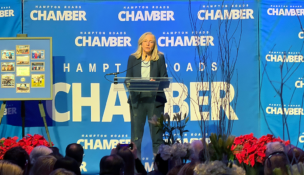Boosters seek federal protection for Chesapeake Bay recreation
Ryan McKinnon //August 30, 2021//
For decades, conservationists have lobbied for the Chesapeake Bay to become a national park.
During the past year, a new twist on that old idea has gained momentum: establishing the Chesapeake Bay as a national recreation area, stretching from Hampton’s Fort Monroe north to Annapolis, Maryland.
National recreation areas extend federal protections to preserve recreational activities in places with significant natural or scenic resources. In this case, the Chesapeake Bay National Recreation Area would be managed by the National Park Service, with the designation linking dozens of existing parks and public lands in order to protect access to outdoor activities such as hiking and boating.
Boosters hope the designation could raise the Chesapeake’s profile and increase tourism in Virginia and Maryland. Last year, both states’ governors endorsed a proposal from the Chesapeake Conservancy to seek the federal designation. Two Maryland congressional representatives established a working group this year to examine the idea, which is supported by Virginia’s U.S. senators.
Impacting roughly 140 miles of the bay, the proposal has generated concern over the potential for new regulations on land use and commercial fishing. However, while commercial fishing is heavily regulated in waterways managed by the National Park Service, the Chesapeake Bay National Recreational Area’s footprint would be entirely land-based and limited to a handful of tourist sites.
Reed Perry, manager of external affairs with Chesapeake Conservancy, says the designation would link communities on both sides of the water and support bay preservation — including commercial fishing, which “is a big part of the heritage of the bay. It is a primary goal to celebrate that heritage.”
And while the project wouldn’t open the spigot for federal dollars, it would make the region eligible for some environmental grants.
If the idea becomes reality, the National Park Service will be purchasing to-be-determined land parcels to improve public waterway access. Fort Monroe, which is already partially under National Park Service management, would be the site of a possible welcome center.
Localities will have final say on land-use determinations in the designated area, says Parker Agelasto, executive director of the Capital Region Land Conservancy.
The ultimate hope is to draw to the region visitors who will return home with appreciation for the bay and those who make their livings from it.
“If people care about someone else’s workplace, they’ll work to preserve it,” Agelasto says.
s
















